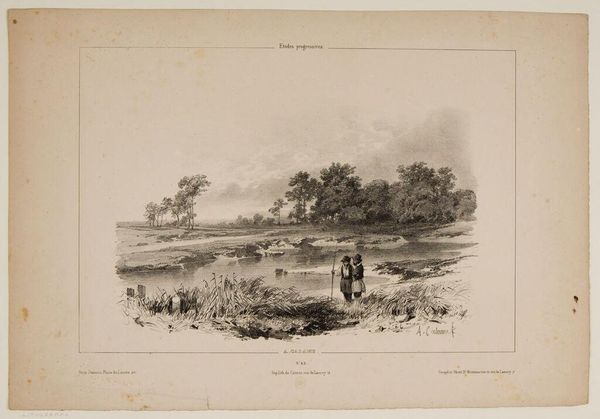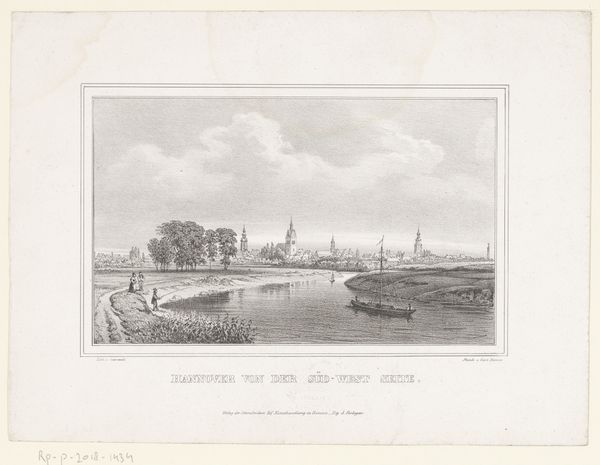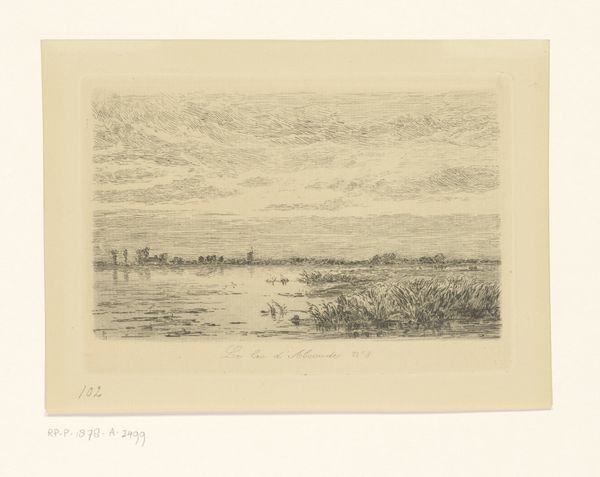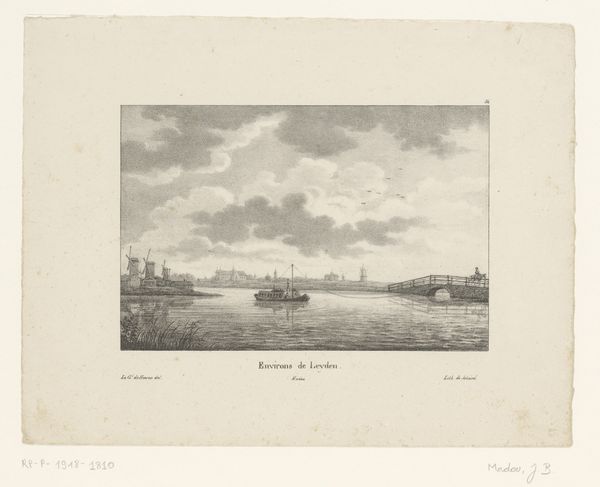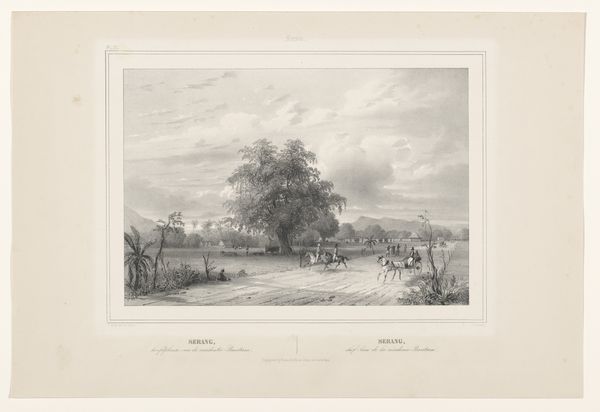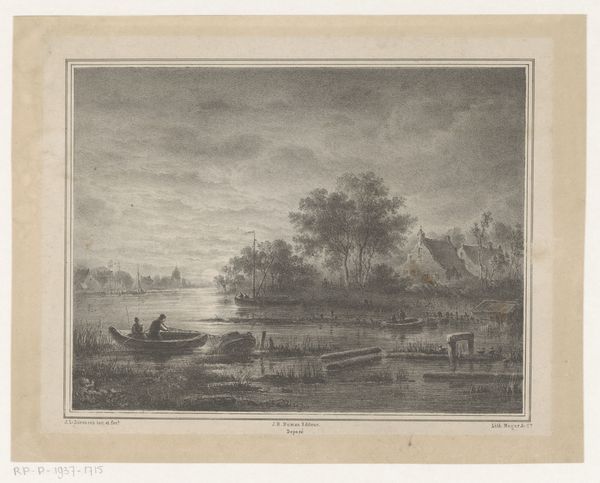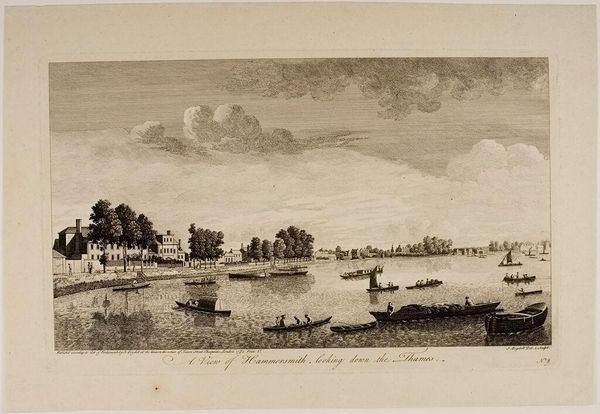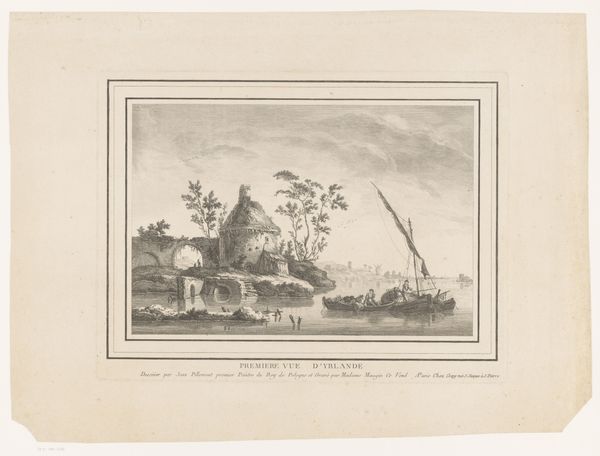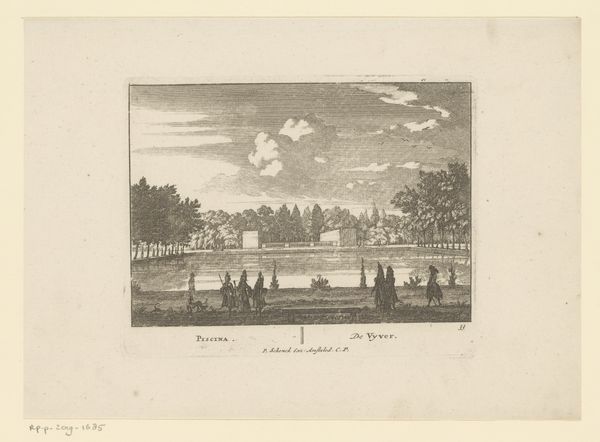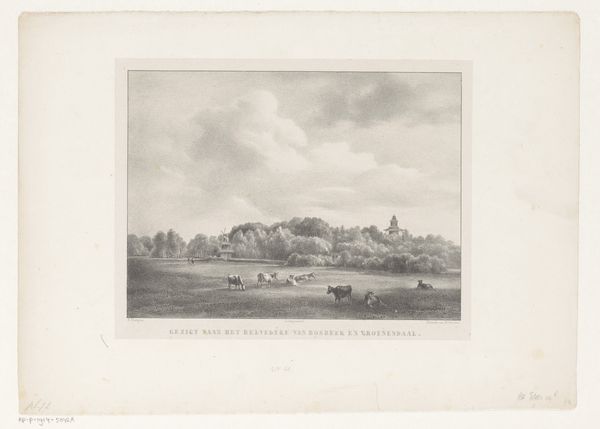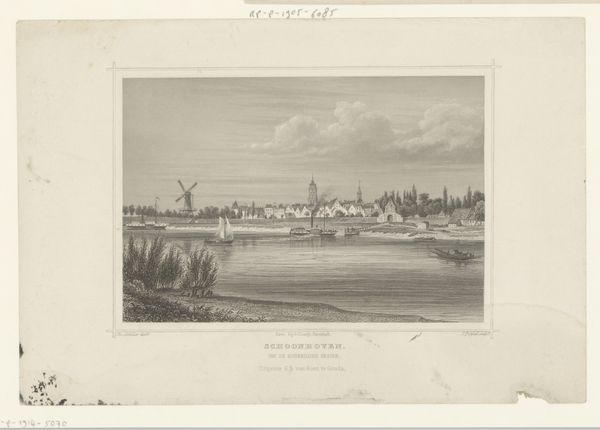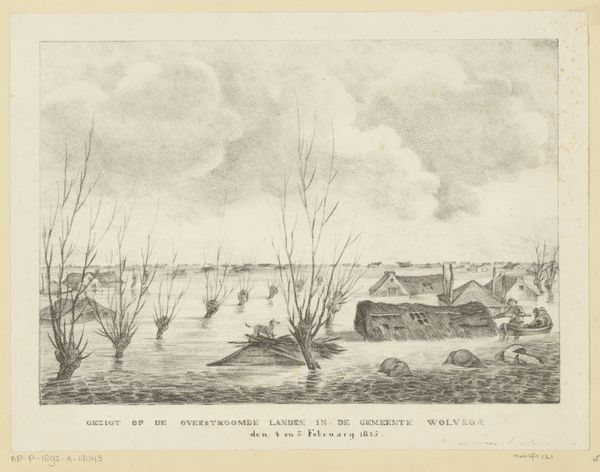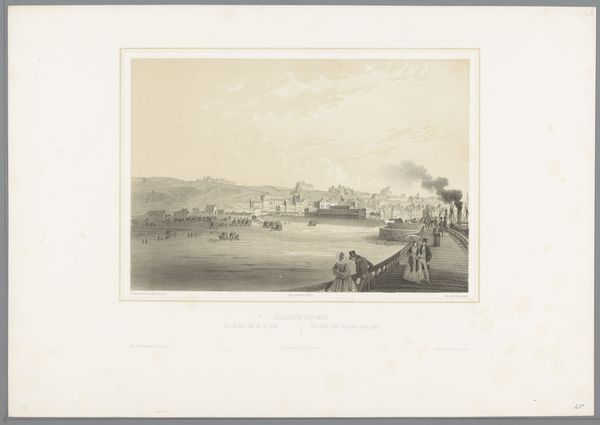
drawing, paper, ink
#
drawing
#
dutch-golden-age
#
landscape
#
paper
#
ink
#
romanticism
#
cityscape
#
realism
Dimensions: height 230 mm, width 305 mm
Copyright: Rijks Museum: Open Domain
Editor: So this ink drawing on paper is entitled “Gezicht op Broek in Waterland,” placing it somewhere between 1800 and 1850. It seems to capture a still, serene landscape. What immediately strikes me is the attention to detail, particularly in the reflection on the water. How do you interpret this work, looking at it formally? Curator: Primarily, I am drawn to the composition. The artist’s careful placement of the horizon line creates a balanced interplay between the sky, water, and land. Notice how the cloud formations echo the town's architecture below. What effect does this mirroring create? Editor: It gives the artwork a sense of unity and perhaps even harmony. The softness of the ink adds to the tranquil mood. Curator: Precisely. Observe how the artist employs a limited tonal range, almost monochromatic, to convey depth and atmosphere. Semiotically, this reduced palette amplifies the quietness of the scene. Consider also the meticulous rendering of architectural forms and the sail boat against the diffused background. Do you see any possible tensions at play in the drawing's construction? Editor: I see that. While the scene itself seems tranquil, the precision of the architectural rendering contrasts with the almost blurred depiction of the background elements. Is this a commentary on nature versus urbanity? Curator: Potentially, although it may just highlight how the artist chooses to portray certain aspects. The composition draws the viewer's eye to the village, even though the sky and water occupy a large proportion of the overall image. Considering the principles of realism, the lines are precise to their architectural and natural elements, with minimal emotionalism; though elements of Romanticism prevail, specifically in the grand scope of the setting and softened affect. Editor: It's amazing to consider how all of those compositional choices result in such a captivating scene. I'll never see it the same way again! Curator: Indeed, scrutinizing the composition can open doors to new perceptions of the work, allowing a broader aesthetic enjoyment.
Comments
No comments
Be the first to comment and join the conversation on the ultimate creative platform.
